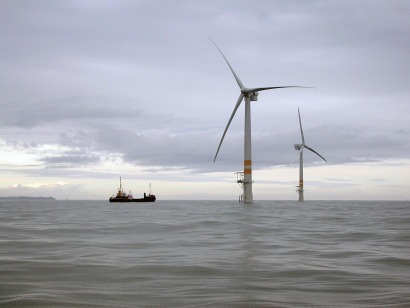
The report explains how the board is pursuing a comprehensive programme of real action to drive down costs and maximise benefits to the UK economy - tackling issues from skills to innovation, from financing to contracting. From January 2014 the UK became the clear world leader in offshore wind with some 3.6GW of installed operating capacity, and a further 1.4GW under construction. Over one thousand offshore wind turbines have already been installed and the UK is the most attractive destination for investment in the world. The Department of Energy and Climate Change (DECC), along with representatives from the industry itself, have set out a plan to continue to be the largest global market for offshore wind, with the scenarios recently published enabling deployment of 8-15GW by 2020, and up to 41GW by 2030.
“The UK is the world leader in offshore wind - with more deployed than any other country, and a framework in place to retain our global lead” said Energy Minister Michael Fallon. “The benefits that offshore wind can bring are clear: as costs fall it can enhance our long-term energy security, reduce our dependence on imports and help reduce our carbon emissions. And, crucially, offshore wind can play a vital role in driving growth - adding billions of pounds of value to the UK economy and supporting thousands of jobs.”
The OWPB is preparing to move from planning and establishment of structures to real delivery during the course of 2014. It has set out several proposals accordingly. These include the delivery of outputs identified as crucial to cost reduction, acting as a hub for developers and supply chain companies in order to drive cost reduction, measuring progress against cost reduction objectives and ensuring the UK has the right objectives in the light of the final design of Electricity Market Reform.
The Department of Business, Innovation and Skills (BIS) has also published a report on the offshore wind supply chain demonstrating the UK’s opportunities for future growth. The report highlights large future opportunities for the UK, not only in turbine supply, but in balance of plant components such as foundations and substations, and in the on-going operations and maintenance activity.
For additional information:

